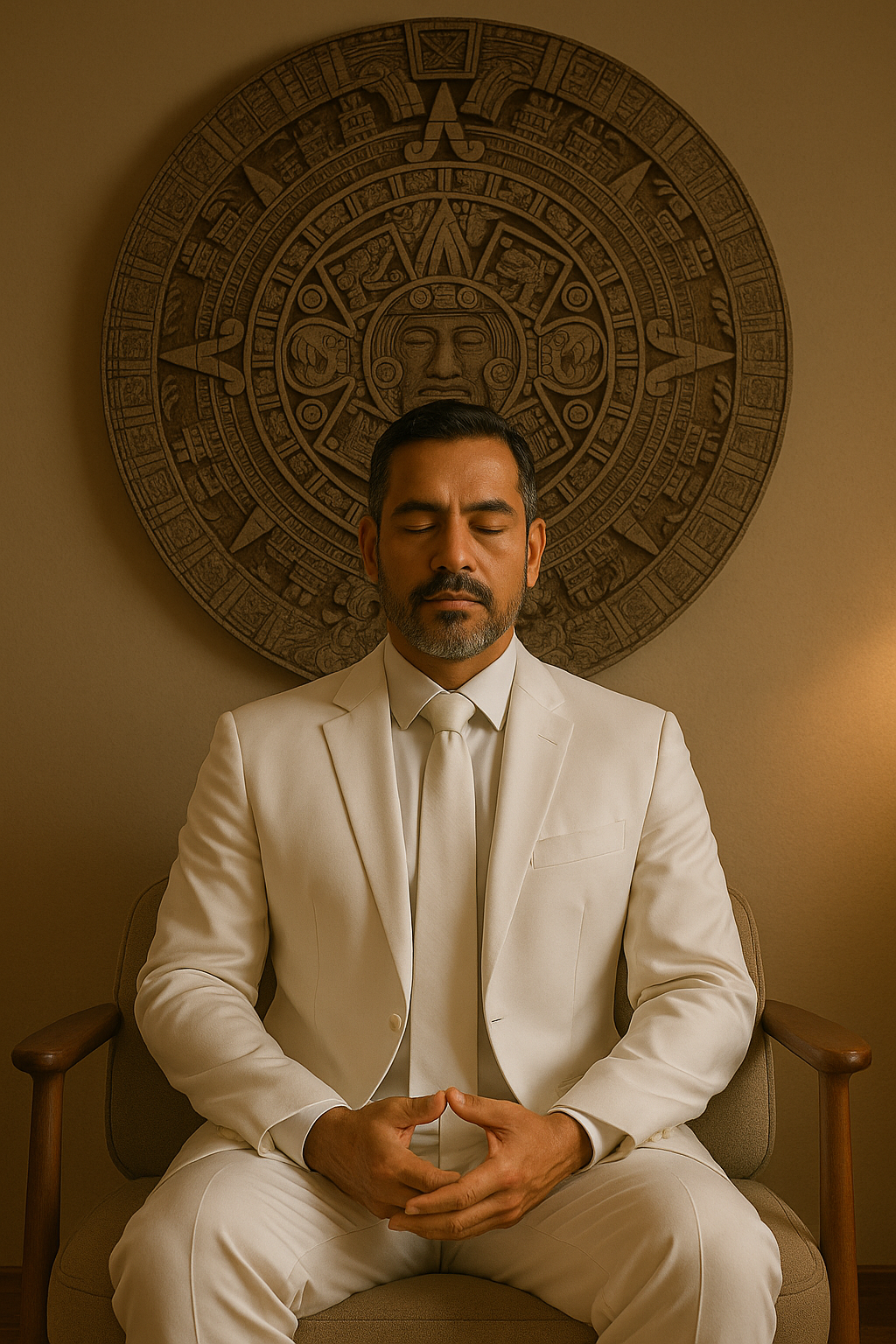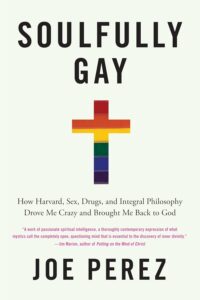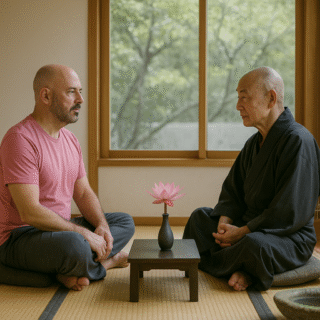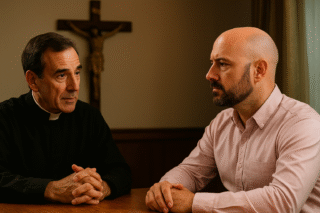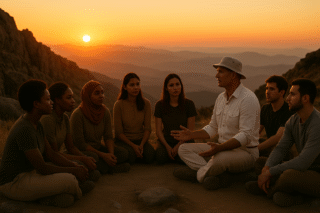INTRODUCING KALEN O. TOLAN
It was a pleasant summer afternoon on the campus of a progressive theological college. The sun cast a soft glow over the gently sloping lawn, and a warm breeze carried the scent of lavender from a nearby garden. Kalen, a spiritual teacher known for their quiet wisdom and nondual teachings, sat on the upper side of the grassy slope, looking out over six students seated in a crescent before them. Kalen was a middle-aged man, bald, dressed simply in white shorts and a T-shirt. His presence was calm, grounded, and radiant.
With a gentle but piercing voice, Kalen asked a single question:
“Same or different?”
They invited the students to enter into a meditation, to sit with the question not intellectually but inwardly, letting it unfold in its own time. After some minutes of silence, Kalen gestured softly to the first student.
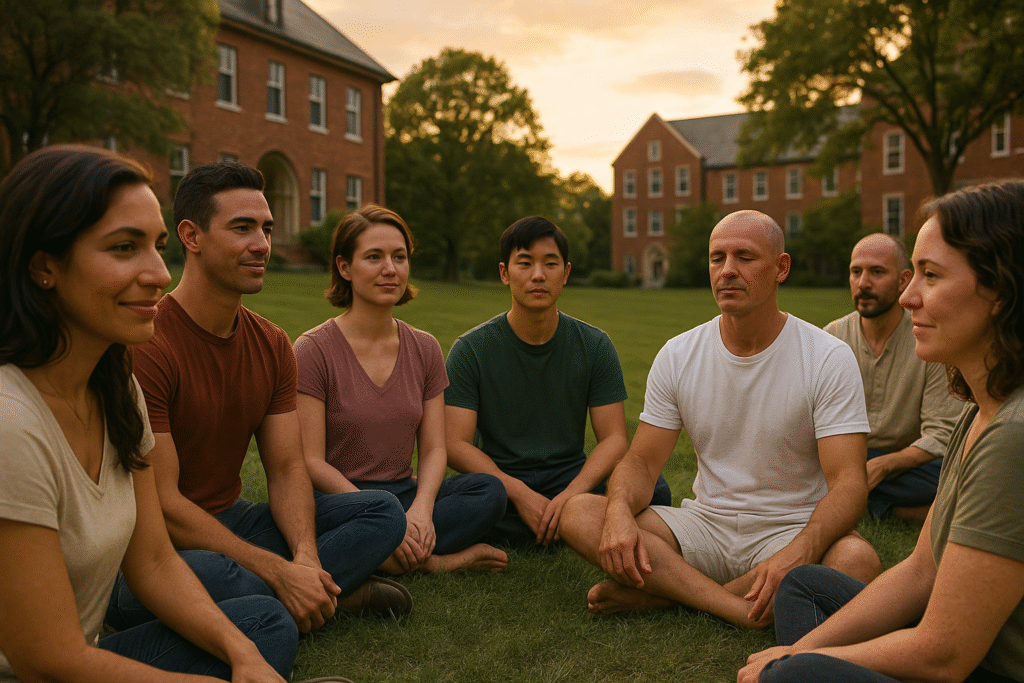
Student One: “Different.”
The first student, Amira, a heterosexual woman with a thoughtful gaze, spoke with calm certainty. “Different. I see separation. I am me, and others are not me. The world is filled with difference — in form, thought, emotion. Even when I try to feel unity, it eludes me.”
Kalen nodded. “You are seeing clearly what most of us live unconsciously. Difference is real in the world of form. There is nothing wrong with perceiving it. But tell me, who is the one who sees the difference? Stay with that. Notice how difference arises to awareness. What is that awareness made of?”
Student Two: “Same.”
Next was Elijah, a gay man with bright eyes and a contemplative demeanor. His voice was soft but assured. “Same. Under the surface, everything feels connected. I sense one energy, one essence moving through all things.”
Kalen smiled gently. “This is the beginning of seeing through the illusion of separation. But be cautious of ideas that replace experience. Ask yourself, is this sameness something you know as a thought, or something you feel in your bones? Stay with it. Let sameness not be a belief, but a direct encounter.”
Student Three: “Both.”
Sasha, a transgender bisexual person with a poised and attentive presence, looked up at Kalen with thoughtful eyes. “Both. On the surface, there is difference. But underneath, I see sameness. It’s like form and emptiness coexisting.”
“Yes,” Kalen said. “You are touching the paradox. Love expresses itself through both self-transcendence and self-immanence. This is what I call the Two Prime Directions of Love. The outward movement toward the other, and the inward movement toward the same. Both are sacred. But even this insight points beyond itself. Who is it that sees both? What knows the paradox?”
Sasha nodded, a flicker of recognition crossing her face.
Student Four: “Neither.”
Tariq, an asexual man with a wry smile and clear, intelligent eyes, chuckled softly. “Neither. The categories don’t work. Same and different are just labels. They fall apart in awareness.”
Kalen met his gaze. “You are seeing through the illusion of concepts. This is the threshold of nonduality. But be careful. Are you dissolving reality or avoiding it? Realization means we can move freely between form and emptiness, not escape one for the other.”
Tariq bowed slightly, acknowledging the invitation to go further.
Student Five: Silence
The fifth student, Manu, a heterosexual man who had taken a vow of celibacy, said nothing. He looked at Kalen with tears in his eyes. A faint smile trembled at the corners of his mouth.
Kalen waited. Then nodded. “Good. No need to speak. Truth is not always verbal. Sometimes when the question is held deeply enough, it dissolves the need for an answer. In silence, what is true can shine without resistance.”
Student Six: “I don’t know.”
The last student, Michelle, a lesbian woman with a grounded and sincere presence, looked down at the grass and admitted, “I don’t know. I feel confused.”
Kalen beamed. “Perfect. Stay with that. Don’t try to know. Let the not-knowing become your path. When the mind softens, something else emerges. The ego collapses in not-knowing, and love takes its place.”
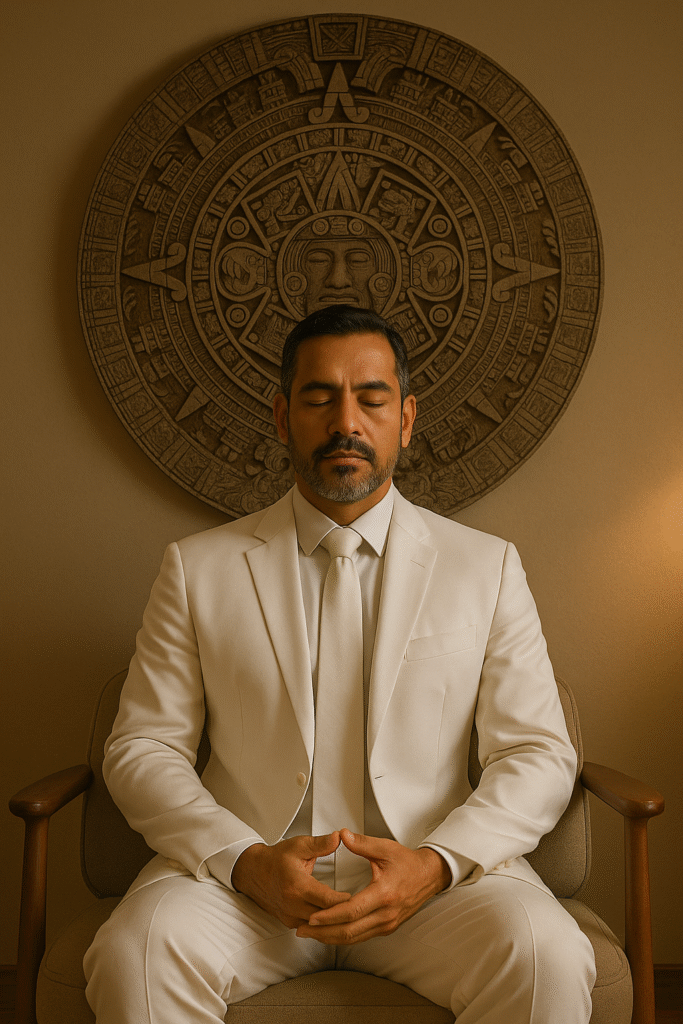
The Teacher’s Closing Words
Kalen looked over the group, the breeze playing in their hair.
“Same or different? This is not a question to be answered but a gateway to reality. Love and fear are the deepest polarities of our lives. The path we choose — to love the same or to love the other — is not just about who we are attracted to. It is about how we meet the world.
Same-sex love is a divine metaphor. It teaches us about self-immanence — about finding God within. Different-sex love teaches us about self-transcendence — about finding God in the other. Both are holy.
And in the still point between same and different, there is a silence so full, so radiant, it erases every boundary. It is here that you will find what you have always been.”
The students sat in silence, not seeking answers, but becoming the question.
